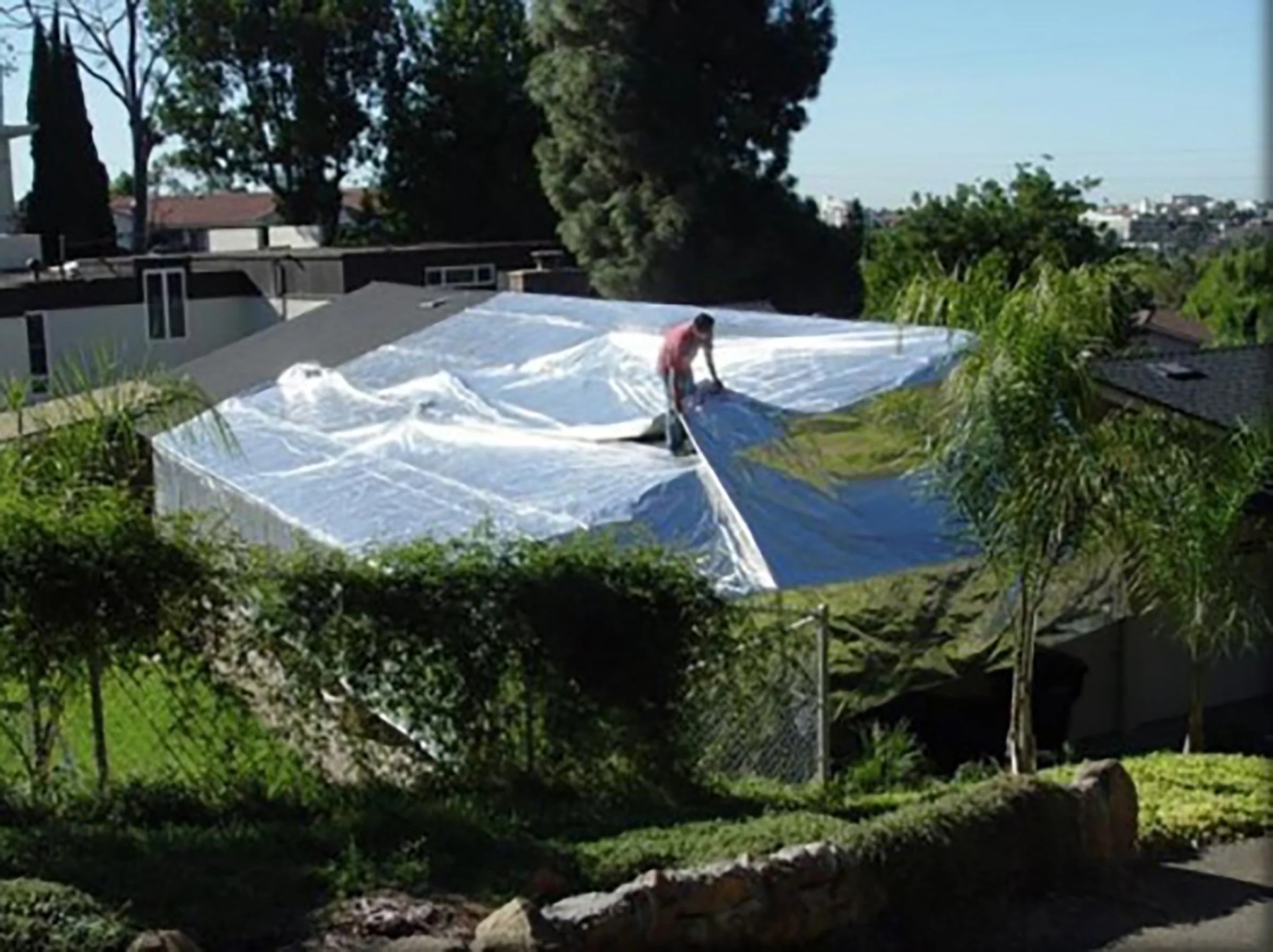How Does it Work?
First, a major cause of house ignition is when radiant heat preheats the wood to its flash point, about 585°F. Although wood can burn about 300°F it can burst into flames without flame contact at its flash point. Radiant heat also passes through unprotected windows and preheats curtains, furniture, and carpet to combustion and the home will burn from the inside out.
Second, the fire shield provides a fire resistant, slick surface that allows firebrands or burning embers to land and slide off your roof or extinguish safely. The fire shield also eliminates sharp angles on your roof that can catch and trap embers allowing them to burn and eventually ignite your roof. Curved tile roofs like those used in the Southwest can become ember-collectors, actually trapping burning embers inside.
Third, fire shields provide a fire resistant layer between your home and radiant heat, flames, and firebrands. By using the water saturation method, simply laying a sprinkler hose at the top of your roof then covering it with fire shields, the shields prevent evaporation and maintain a wet environment under the shields dramatically improving your survival chances. If the heat gets very severe the water will turn to steam, reducing oxygen, wetting fuel (your roof or walls), and dissipates the heat.
And finally, in the worst case scenarios anchored fire shields will deny the fire oxygen that it needs to burn. In some cases after long extended exposure to intense flame or heat some smoldering or charring may occur under the shields. Firefighters can easily extinguish this when they come back after the fire has burned through. Better to replace a section of roof than lose your entire home.
How much do you need?
This varies but is fairly easy to figure out. We strongly recommend covering all areas when possible but if you are planning to stay and defend wrap your home in this order.
- Zone 1 is the roof -- If your roof is not fire proof this is usually the most important area to cover
- Zone 2 is the side that will most likely face the fire assault.
- Many times homeowners know which direction the fire will likely approach from.
- The east due to Santa Anna wind conditions, or up a slope, or from a dry fuel supply on one side of the structure.
- Zone 3 is the rest of the structure.
What are they made of?
Firezat Fire Shields are sewn with fire resistant DuPont® Kevlar® thread for superior strength and protection. The fire shields are easy to handle, deploy quickly, and work best for large areas such as roofs, homes, buildings, vehicles, business inventories and equipment. When wrapped under the roof eave they provide maximum protection from fire entering the attic or igniting under the roof. Firezat Fire Shields are delivered and stored in double-wall boxes wrapped with waterproof plastic. They can be reused and stored for extended periods of time and will not support mold or mildew. They are resistant to most acids, alkalis & solvents with the exception of hydrofluoric acid. If the home is sold they can be passed on to the new owners just like a burglar alarm system or you can take them with you.

